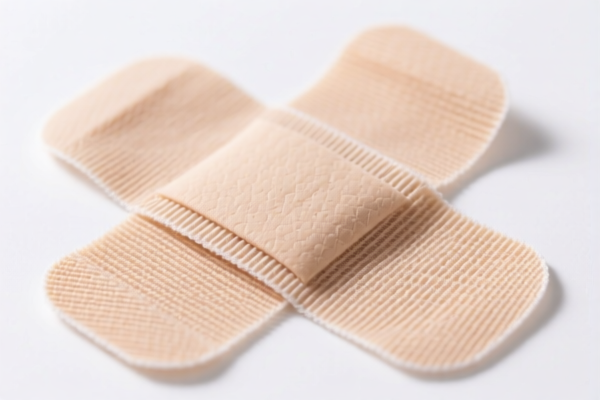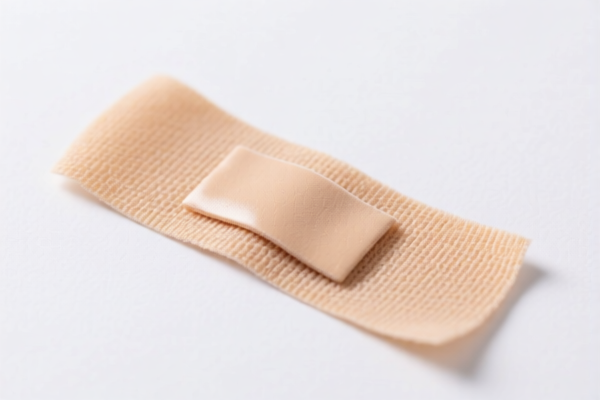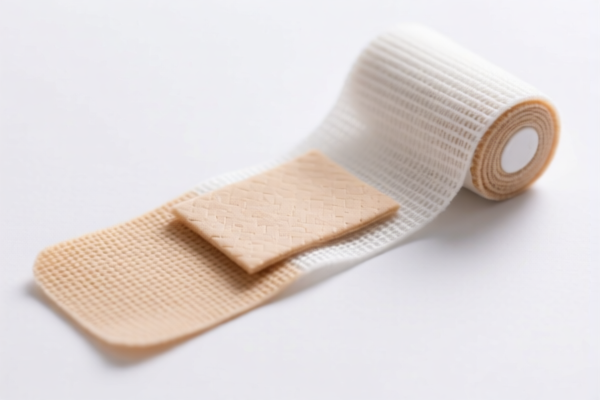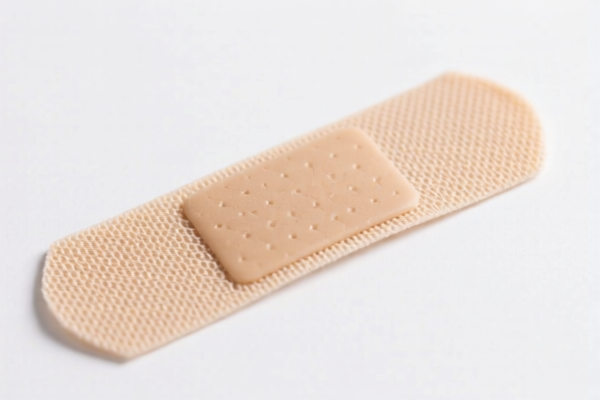| HS Code | Official Doc | Tariff Rate | Origin | Destination | Effective Date |
|---|---|---|---|---|---|
| 3003900190 | Doc | 30.0% | CN | US | 2025-05-12 |
| 3005101000 | Doc | 30.0% | CN | US | 2025-05-12 |
| 3005105000 | Doc | 30.0% | CN | US | 2025-05-12 |
| 6815994170 | Doc | 55.0% | CN | US | 2025-05-12 |
| 6806900090 | Doc | 55.0% | CN | US | 2025-05-12 |
| 6811400000 | Doc | 55.0% | CN | US | 2025-05-12 |
| 6811899000 | Doc | 55.0% | CN | US | 2025-05-12 |
| 6812999000 | Doc | 55.0% | CN | US | 2025-05-12 |
| 9503000090 | Doc | 30.0% | CN | US | 2025-05-12 |
| 9503000071 | Doc | 30.0% | CN | US | 2025-05-12 |
| 9619009000 | Doc | 44.5% | CN | US | 2025-05-12 |
| 9619000500 | Doc | 42.5% | CN | US | 2025-05-12 |




Adhesive Bandages
Adhesive bandages, also known as plasters, Band-Aids (a common brand name), or sticking plasters, are small, flexible strips of adhesive material used to protect minor wounds, cuts, scrapes, and blisters.
Material
The typical adhesive bandage consists of three layers:
- Backing: Usually made of a flexible plastic film, such as polyethylene, polyvinyl chloride (PVC), or fabric, providing a waterproof barrier. Some are breathable, utilizing materials like polyurethane.
- Adhesive: A pressure-sensitive adhesive, commonly acrylic-based, allowing the bandage to stick to the skin. Adhesives vary in strength and hypoallergenic properties.
- Absorbent Pad: A central pad, typically made of cotton gauze, non-woven material, or foam, to absorb fluids and protect the wound. Some pads are medicated with antiseptics or antibiotics.
Purpose
The primary purpose of an adhesive bandage is to:
- Protect the wound: Shielding the injury from dirt, bacteria, and further trauma.
- Promote healing: Creating a moist environment conducive to wound repair.
- Prevent infection: Acting as a barrier against external contaminants.
- Reduce pain: Minimizing discomfort by protecting exposed nerve endings.
- Stop minor bleeding: Applying gentle pressure to the wound.
Function
Adhesive bandages function by:
- Adhesion: The adhesive layer sticks to the skin surrounding the wound.
- Compression: The bandage applies gentle pressure, helping to stem bleeding.
- Occlusion: The backing creates a barrier against external elements.
- Absorption: The pad absorbs exudate (fluid) from the wound.
Usage Scenarios
Adhesive bandages are commonly used for:
- Minor cuts and scrapes.
- Small blisters.
- Superficial burns.
- Post-surgical wound protection (small incisions).
- Securing dressings.
- Preventing friction on areas prone to blisters (e.g., heels).
Common Types
- Fabric Bandages: Flexible and conformable, often used for joints and areas of movement.
- Plastic Bandages: Waterproof and durable, suitable for areas exposed to moisture.
- Waterproof Bandages: Designed to remain adhesive even when wet.
- Hydrocolloid Bandages: Contain a gel-forming substance that absorbs fluid and creates a moist healing environment, often used for blisters and pressure sores.
- Antibiotic Bandages: Contain an antiseptic or antibiotic to help prevent infection.
- Blister Bandages: Specifically designed to protect and heal blisters, often thicker and cushioned.
- Specialty Shapes & Sizes: Available in various shapes (e.g., knuckle, fingertip) and sizes to fit different wound locations.
- Clear Bandages: Useful for cosmetic applications or when monitoring wound healing.
Adhesive bandages are typically wound dressing materials designed for medical or surgical purposes, often featuring an adhesive layer. Based on the provided information, several HS codes may be relevant:
- 3005101000: This HS code covers “Wadding, gauze, bandages and similar articles (for example, dressings, adhesive plasters, poultices), impregnated or coated with pharmaceutical substances or put up in forms or packings for retail sale for medical, surgical, dental or veterinary purposes: Adhesive dressings and other articles having an adhesive layer: Coated or impregnated with pharmaceutical substances”. This suggests the bandages contain pharmaceutical substances.
- 3005105000: This HS code covers “Wadding, gauze, bandages and similar articles (for example, dressings, adhesive plasters, poultices), impregnated or coated with pharmaceutical substances or put up in forms or packings for retail sale for medical, surgical, dental or veterinary purposes: Adhesive dressings and other articles having an adhesive layer: Other”. This applies to adhesive bandages not specifically coated or impregnated with pharmaceutical substances.
- 9503000090: This HS code covers “Tricycles, scooters, pedal cars and similar wheeled toys; dollsʼ carriages; dolls, other toys; reduced-scale (“scaleˮ) models and similar recreational models, working or not; puzzles of all kinds; parts and accessories thereof Other”. While less likely, this code could apply if the adhesive bandages are considered toys or recreational items.
Tax Rate Information:
- 3005101000 & 3005105000: Both have a base tariff of 0.0%, a surcharge of 0.0%, and a tariff of 30.0% effective April 2, 2025. The total tariff rate is 30.0%.
- 9503000090: Has a base tariff of 0.0%, a surcharge of 0.0%, and a tariff of 30.0% effective April 2, 2025. The total tariff rate is 30.0%.
Important Note:
The classification between HS codes 3005101000 and 3005105000 depends on whether the adhesive bandages are coated or impregnated with pharmaceutical substances. It is crucial to verify the composition of the bandages to determine the correct HS code.
Customer Reviews
No reviews yet.